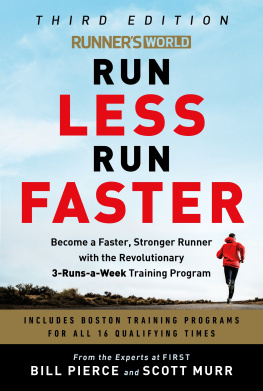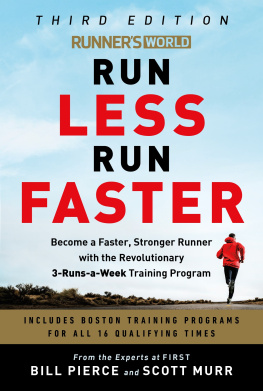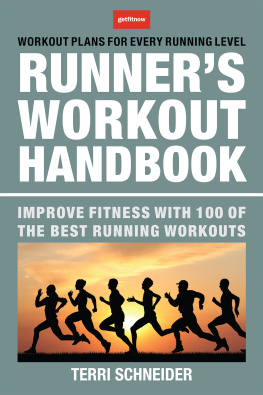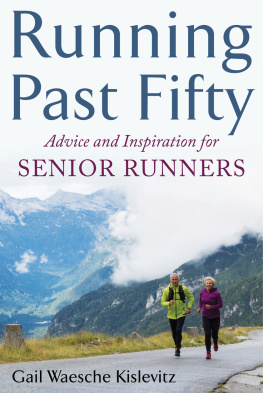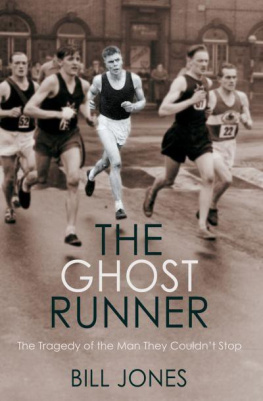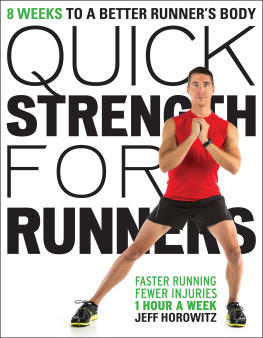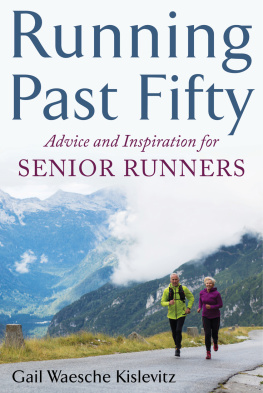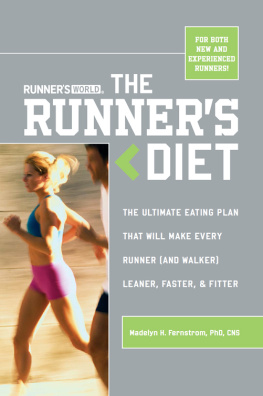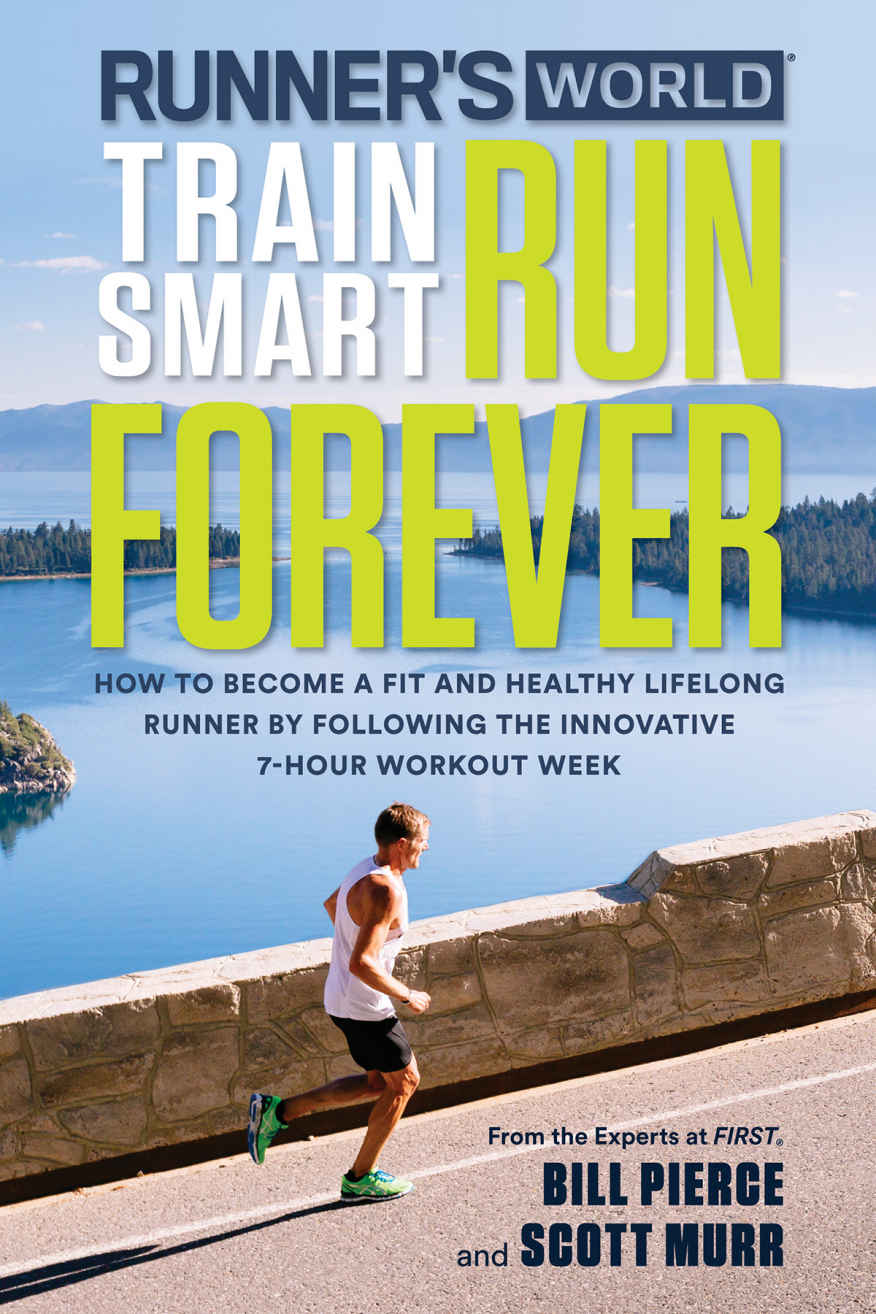Also by Bill Pierce and Scott Murr:
Runner's World Run Less, Run Faster: Become a Faster, Stronger Runner with the Revolutionary 3-Run-a-Week Training Program

To the thousands of runners around the globe who have shared with us their FIRST training program experiences and to all who are pursuing a lifetime of running.


CONTENTS

FOREWORD
When you first meet him, in his crisp button-down shirts and pressed khaki pants, with his tea drinkers manners and opera devotees charm, Bill Pierce comes across as the college professor and university administrator he is.
What you may not immediately apprehend is that this man is fierce. His trim waistline hasnt inched up since his days of basketball stardom on high school courts in West Virginia and on three Southern Conference teams at Davidson College. Beneath that Bruce Wayne exterior is a 60-something superheroan athlete committed to performing puke-inducing workouts, a butt-kicking competitor. Just being with Bill makes you want to stand up straighter, swear off Cheez-Its, and get your lazy self to the track. Its never anything he says. Always polite and courteous, Bill doesnt offer unsolicited advice. But when you ask for his help, he gives.
When Bill invited me to come to Furman University to talk to his first-year students who had read my book on running, I said yes. During my visit, when he proposed to measure my body fat, hector me to reach my lactate threshold, and stand beside the treadmill as I maxed out my VO2 , I said no freaking way . I was, I thought, beyond caring about my marathon times. My PRs were long behind me.
But spend enough time with him and you will fall under Bills spell. You begin to wonder if maybe you could get faster. You resolve to push yourself harder. You want, most of all, not to disappoint him.
Like many humans, I regularly lie to myself about lots of things, including my level of fitness. If I compare myself to most people, Im doing okay. But Ive never wanted most people to be my control group; I prefer to keep company with those who are excellent. For much of my running life, Ive done my long runs with younger men. These days, when I tell myself its fine that I cant keep uptheyre younger! theyre men!Im lying. It doesnt feel fine. It sucks.
So after Id met with the Furman students, I submitted and let Bills team perform a battery of expensive tests on me. I whined the whole time and then quailed at the results. The data showed I was not as fit as I wanted to believe. Data, scientists like to remind us, dont lie. And data dont give a hoot about our feelings.
Hoots were, however, given by Bill. As he consoled me, he talked about the inevitable downward slither we can expect as we age and reminded me that if you want to run fast, you have to run fast. Bill invited me to come back for one of his FIRST retreats. This time, I said yes, please .
At the retreat, I met a group of people as culturally diverse as they were serious about running. We sat in classrooms listening to engaging lectures and lay relaxed on the bed of the DEXA machineuntil we discovered that while we may have looked trim and fit, many of us were padded with pace-slowing fat. We ran on treadmills wearing Darth Vader masks, stopping every few minutes to let otherwise pleasant people stick needles in our fingers. As often happens when folks suffer together, we bonded.
Since Id spent years writing for magazines about running, I knew much of what we were taught. However, Id managed to ignore almost everything and implement none of it into my training, which had, by then, deteriorated to the ignoble level of a recreational jogger.
The FIRST retreat made me determined to get faster. Following orders has never been my strong suit, but when Bill agreed to coach me, I found myself thrilled never to have to think about my running. I just did whatever Bill told me to do. The tables in Runners World Run Less, Run Faster gave me exact workouts at precise paces. While I occasionally went on unsanctioned dog runs (I had a puppy) and couldnt resist entering beloved races that were not in my best (training) interest, the satisfaction of completing each tempo run or track workout, and then being able to report to Bill and bask in his approval, made the experience a joy.
And at the age of 50, I ran my fastest marathon in 7 years.
If you believe that you are immune to the ravages of age, well, good luck to you. I hope Santa or the Easter Bunny brings you eternal youth. But if you want to keep running into your dotage and youre open to receiving help and advice to be able to keep doing what you love, this book is for you.
Here, Bill Pierce and his equally hardcore coauthor, Scott Murrfather to two teenagers and six-time finisher of the Ironman Triathlon World Championships in Kona, Hawaiitell you what you need to know. Ignore their wisdom at your peril.
Rachel Toor
Professor of Creative Writing
Eastern Washington University

PREFACE
In 1983, I accepted a position as assistant professor of health and physical education at Furman University in Greenville, South Carolina. As a distance runner, I welcomed the move from beautiful but cold and snowy Idaho to the sunny South. Even with its hot, humid summers, Greenville, located in the Upstate of South Carolina near the foothills of the Blue Ridge Mountains, offers a climate conducive to year-round training and an active running community. I was attracted to Furman because of its emphasis on a required fitness-concepts course for all students. As the department chair since 1984, I have led the institutions commitment to promote wellness among the students, faculty, and staff. I am gratified by the many members of the campus community who have come to enjoy running, cycling, swimming, and a broad array of fitness activities.
Two members of the Furman community significantly influenced my personal life and professional career. Scott Murr was a senior health and physical education major when I arrived at Furman. He was an outstanding student and a fitness enthusiast. We soon began running and racing together. For 3 decades we have shared those activities and mutual interests. Three years after I began my teaching at Furman, I hired exercise physiologist Ray Moss. Ray had been teaching at a medical school in Texas and brought a wealth of knowledge and skill to Furman. Almost immediately after arriving at Furman, Ray designed, built, and developed a first-class human-performance laboratory with the fitness-assessment capabilities needed for testing runners physiological parameters.
Scott, who joined our faculty after he earned a doctorate in exercise science, Ray, and I spent thousands of hours discussing fitness and training methods over the next 15 years before the three of us founded the Furman Institute of Running and Scientific Training (FIRST).


